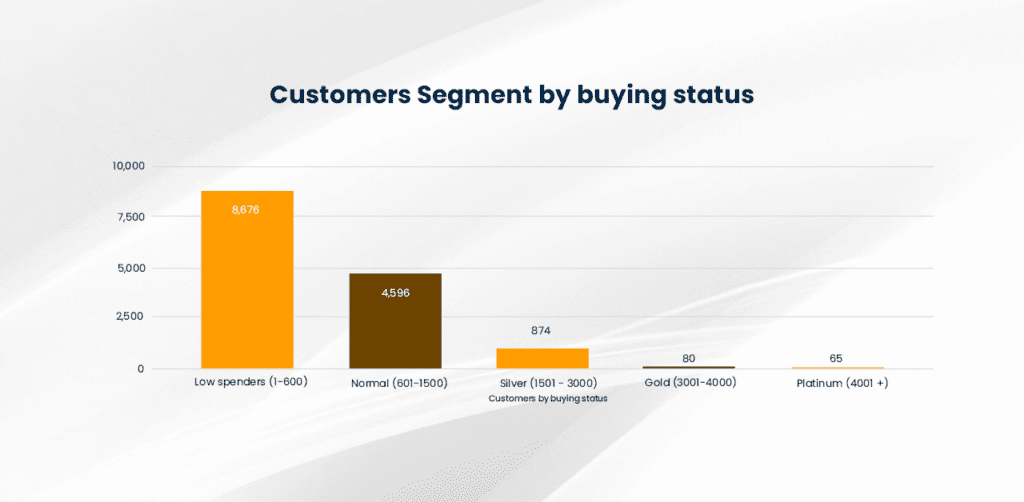In a post-pandemic world, eCommerce demands more than just the ‘inventory-order-billing-shipment’ cycle. A seamless eCommerce experience sets you apart from your competitors. Product personalization as per your customer’s interests is one way to achieve it. Every product around the world started its journey in a boardroom, with executives curious to know: Who are we making this product for?
Gathering and analyzing consumer data can be the start of answering this question. Even though, consumer behavior can differ in a variety of ways. Product personalization starts with consumer data segmentation.
Big Data: Influencing Customer Behavior
To change the world, the very first step is to change the way we look at the world – David Allison
As an eCommerce marketing professional, to promote your services and products to a target audience, you need to start segmenting your audience by building personas from customer big data. The owners can start by segmenting the customer based on:
- Demographic segmentation can describe what people are: male, female, rich, poor, adolescent, middle-aged.
- Psychographics segmentation is a great way for you to understand how the demographic groups have behaved while shopping on the eCommerce site.
- Valuegraphics segmentation is about how consumers make their decisions post-shopping.
Generally, the norm is to group audiences into demographics, gender, or their designations or roles. But this norm bases its assumption that an individual makes a decision based on different demographics, gender, or designation. There is an interesting fact on Wikipedia, that you share your birthday with 10 odd people. But, how is it possible that all the 10 people have the same interest? With the same logic, you can’t base your product on just one type of segment.
What if, the real treasure lies in the decision-making based on the customer’s value. But how do we find that out? With consumer data analysis you could know what to say to your target audience and how to design an event to be more appealing.
Case Study: Customer Spending Behaviors
An eCommerce jewelry company struggled with building an email marketing strategy as a result of poor customer data analysis. Besides, the results can be used to guide product and marketing decisions to better meet customer needs. One way analysts explored segmentation was through consumer spending habits and divided into five tiers:
Credits: Smart Data Collective
In the bar graph, the largest bar is for low spenders and all others progressively decrease in numbers. After this analysis, owners soon concluded to 5 data-backed decisions
- Budget-friendly price range: The company created a new category – Silver jewelry under $300 on their site, to make it easy for customers to find their preferred products. Consequently, this boosted traffic to the website. Since then, this category has been outperforming all others with a conversion rate of 8.7%.
- Newsletter engagement: Updating the customers with new products or events in the company keeps them engaged. So they planned to send the newsletter to all the subscribers every 2 weeks.
- Win-back campaign for the inactive customers: Basic segmentation showed the owners the customers who did not buy a product for quite some time. Providing coupons incentives could bring back the attention of inactive customers.
What Does it Mean For Marketers?
The goal of the eCommerce experience is to optimize, orchestrate and inspire experiences that will guide customers along their path to purchase. To entirely optimize, orchestrate and inspire the eCommerce experience you have to embrace the changing behaviors of your customers. Moreover, you have to map out the full extent of your buyer’s journey and inspire your audience by weaving their needs into your branding initiatives.
As a solution, customer data segmentation and analysis will not only update you about the changing behaviors and mapping buyer’s journey of your customers but also guide marketers on what to do in the future to retain those customers.
Featured content

Automating Oncology Intake with AI-Power...

Structuring Quality in Enterprise Softwa...

Intelligent Pharmacy Benefit Simulation ...

Modernizing Health Claims Analytics with...

Choosing Polars Over Pandas for High-Per...

Improving Enterprise Agility with a Unif...

The Future of Medallion Architecture wit...

SMS Opt-In Analysis for Customer Engagem...

Enterprise-Grade Automation for Data Pip...


